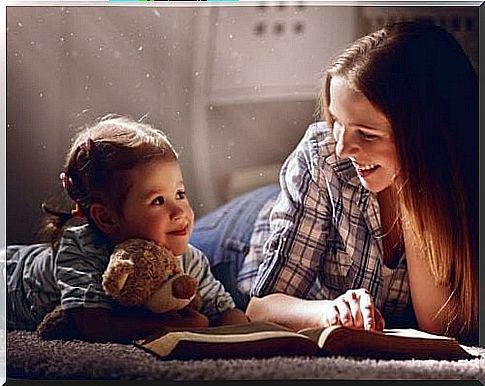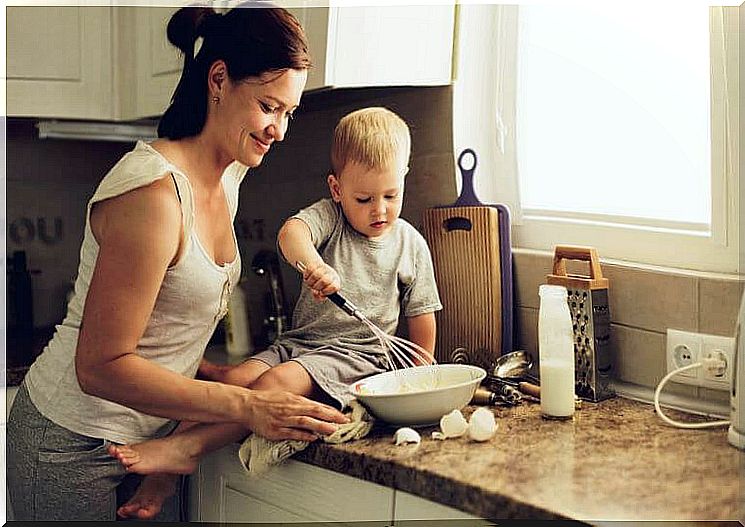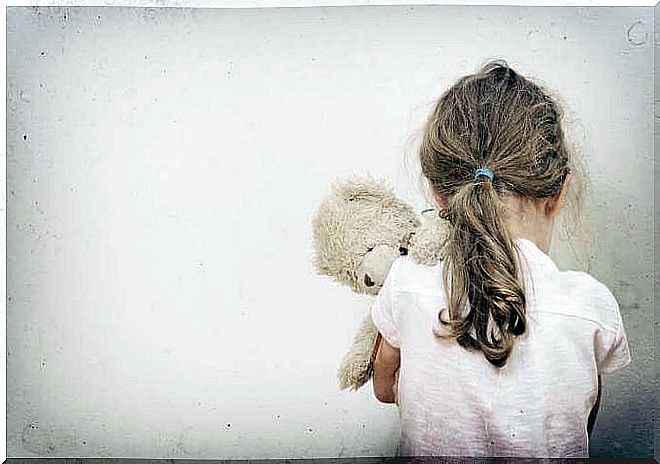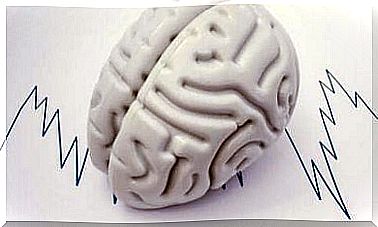Attachment In Childhood And Its Importance For Adulthood
A healthy attachment in childhood is fundamental for a person to become a psychologically healthy adult. Otherwise, he risks suffering from shortcomings in his future relationships.

Attachment in childhood is the emotional and behavioral bond that develops during the early stages of a human being’s life and determines their future relationships.
There should always be a balance and this aspect of life is no exception.
Over-attachment, over-spoiled children, or over-protection are as negative as a lack of hugs, tenderness, and caring.
Attachment in childhood is a basic need
Good attachment in childhood allows children’s brains to develop naturally and healthily.
Attachment helps establish dynamics, such as bonding and socializing with others.
If parents don’t think about children, move away from them, or there is a dysfunctional couple relationship, children are likely to feel insecure in their future relationships.
Security in the first years of life is very important to be able to have healthy relationships and not to suffer from emotional dependence, a fact that can be serious.
When, for example, children suffer from separation from their parents during the development of attachment in childhood, they focus on that.
Parents often ignore their children because they believe “they don’t notice anything”. That the little ones cannot develop anxiety problems regarding their relationships.
Types of attachment in childhood
1. Secure attachment
In this type of attachment, parents are close to their children and respond to their emotional demands. They do not ignore them, they show them their affection and systematically seek their contact.
Always seeking contact with your children does not mean asking them: “give me a kiss” or “give me a hug”.
This is a request that the little ones may not want to respond to because they don’t want to at that moment.
2. The anxious-ambivalent attachment
In this type of attachment in childhood, the parents are tender but they do not know how to show it. Thus, the contact is less, they do not show empathy towards their children and there is a certain distance.
In addition, in this type of attachment, there is always a negative motivation towards the child, that is to say that the parents will always point the finger at what he is doing wrong, but never what he is doing wrong. he does good.
This can then lead to a lack of self-esteem.
3. The anxious-avoidant attachment
In this case, there is a clear rejection towards the smaller ones. Parents show very unpleasant behavior.
For example, when they are unfaithful, alcoholics, abusive and when the child does not even occupy the background, that he is invisible, or even that he represents a burden.
Rejective behaviors are common, as are punishments. The child understands that he is disturbing and that we do not like him. This will have an impact on his future relationships, in which he will often be disappointed.
4. Anxious-disorganized attachment

In the latter case of attachment in childhood, we find abuse and manipulation in the family, especially in the relationship between the parents.
The child feels disoriented because he wants to get closer to the figure with which he identifies but in reality, this parent is manipulating him. He therefore fears it and a great interior inconsistency follows.
This will show up in his relationships because he won’t know what he wants. He won’t know how to love. Handling and control will be present in each of them.
As you have seen, attachment in childhood is very important and it is at the root of the problems that we encounter in adult relationships.
It is essential to develop a healthy attachment because it is with the parents that we begin our first socialization and that we form the first bonds.
Balance, as we have said, also plays a key role. Both excess and lack of contact and tenderness are negative.
The most significant consequence is dependence on others, not only on their affection but also on their approval.
We haven’t all enjoyed a healthy attachment in childhood, but know that it is possible to change.
Thus, we can learn to improve our relationships full of frustration and pain, products of childhood when the attachment has not developed well.









